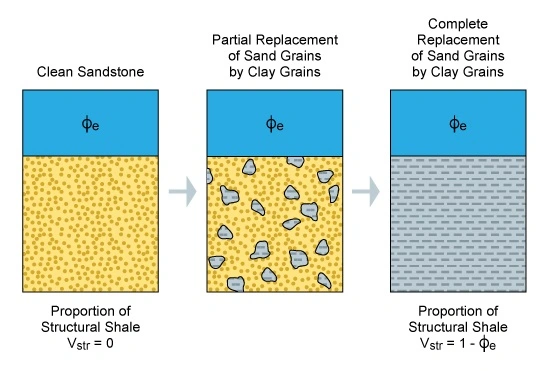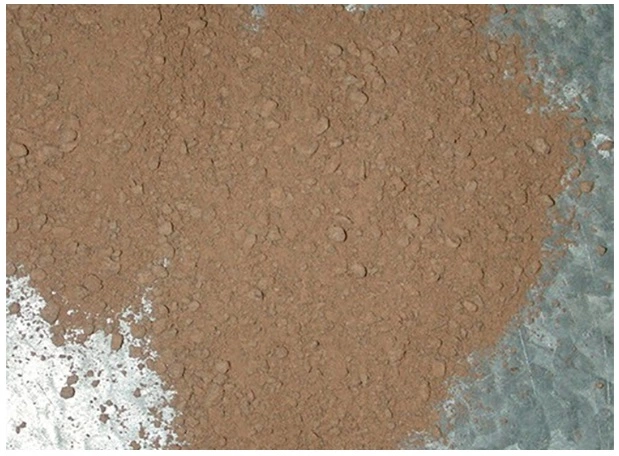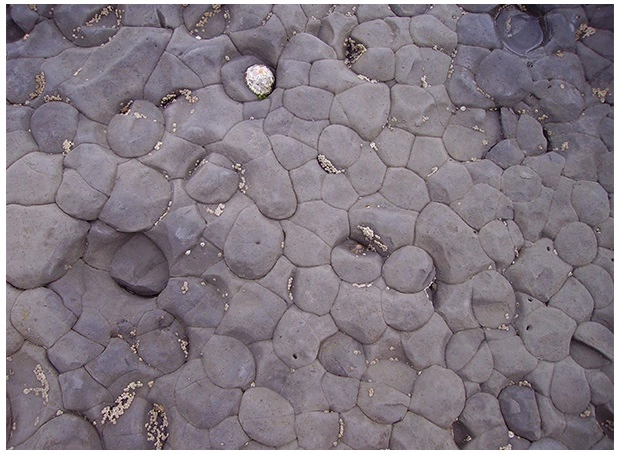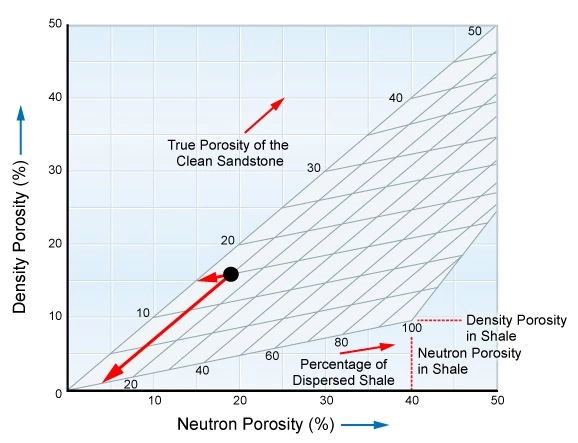Structural Shale Model
Structural shales are a particular type of shale distribution in which the shale exists as grains within a rock framework, in contrast to the situations for dispersed shale and laminar shale.
Structural Shales
In the structural shale model (Figure 1), clay grains (Figure 2), often aggregates of clay particles (Figure 3) or mudstone (Figure 4) clasts, take the place of sand grains (Figure 5).





The effect on the porosity and permeability of the sandstone formation is often limited. However, the fact that the clay replacement grains normally have a different grain density and hydrogen index than the sand grains means that the presence of structural shale will have an effect on the LWD and wireline neutron porosity and density log responses. The maximum theoretical fraction of shale in the case where all the sand grains have been replaced by shale grains is:
![]()
The response of the neutron porosity and density tools can be written as:
![]()
![]()
Where:
ϕDsh= the apparent density porosity in the shale
ϕNsh= the apparent neutron porosity in the shale
Vstr= the volume of the structural shale/clay grains within the logged interval expressed as a decimal
ϕe= the true porosity in the clean sandstone
Which gives:
![]()
and
![]()
This is illustrated graphically in Figure 6 for the situation where:
- Density porosity = 15%
- Neutron porosity = 18%
- Neutron porosity in shale = 40%
- Density porosity in shale = 8%
In this case, the true porosity of the clean sandstone is determined to be 15% and the proportion of dispersed shale is determined to be 10%.

The electrical model for the structural shale model case assumes that, in addition to the Archie term, a shale conductivity term can be added so that:
![]()
Thus:
![]()
Total Shale Relationships
If the actual distribution of shale and clay in the formation is in doubt, an alternative interpretation approach is to use one of the so-called “total shale relationships” that are non-specific as to the type of shale model. Although only some of these relations are based on a sound experimental basis, one of the most widely used is this modified total shale relationship:
![]()
 Petro Shine The Place for Oil and Gas Professionals.
Petro Shine The Place for Oil and Gas Professionals.



